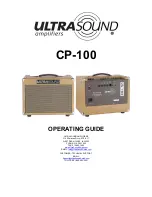
6
Basic safety instructions
AZURA® Detector DAD 6.1L, DAD 2.1L, MWD 2.1L Instructions, V6700
2.7 Specific environments
2.7.1 Earthqake-endangered areas
In earthquake-endangered areas, do not stack more than 3 devices on
top of each other. Otherwise there is risk of injury due to falling devices
or loose parts.
2.7.2 Explosive environment
Never use the system in potentially explosive atmospheres without
appropriate protective equipment. For more information, contact the
KNAUER Customer Support.
2.7.3 Cooling room
You may operate the device in a cooling room. To prevent condensation,
note the following instructions:
Allow the device to acclimatize for min. 3 hours before taking it into
operation.
After taking into operation, the device should stay switched on.
Avoid temperature fluctuations.
2.8 Maintenance, care and repair
Avoiding electric shock: Before performing any maintenance and ser-
vice work, disconnect the device from the power supply.
Tools: Use only tools recommended or prescribed by the
manufacturer.
Spare parts and accessories: Only use original parts and accessories
made by KNAUER or a company authorized by KNAUER.
PEEK fittings: Use PEEK fittings only for a single port or brand-new
PEEK fittings in order to avoid dead volume or not exactly fitting
connections.
Column care: Follow KNAUER or other manufacturer's instructions on
Used capillaries: Do not use any used capillaries elsewhere in the
system in order to avoid dead volumes, not exactly fitting connections
and spreading contamination.
Safety features: The device may only be opened by the KNAUER Cus-
tomer Support of KNAUER or any company authorized by KNAUER
(see „1.4.1 Liability limitation“, p. 2).
For more information visit the KNAUER website:
www.knauer.net/hplc-troubleshooting
2.9 Service request form and decontamination
report
Devices which are shipped without the completed document “Service
request form and decontamination report” will not be repaired. If you
would like to return a device to KNAUER, make sure to enclose the com-
www.knauer.net/servicerequest













































